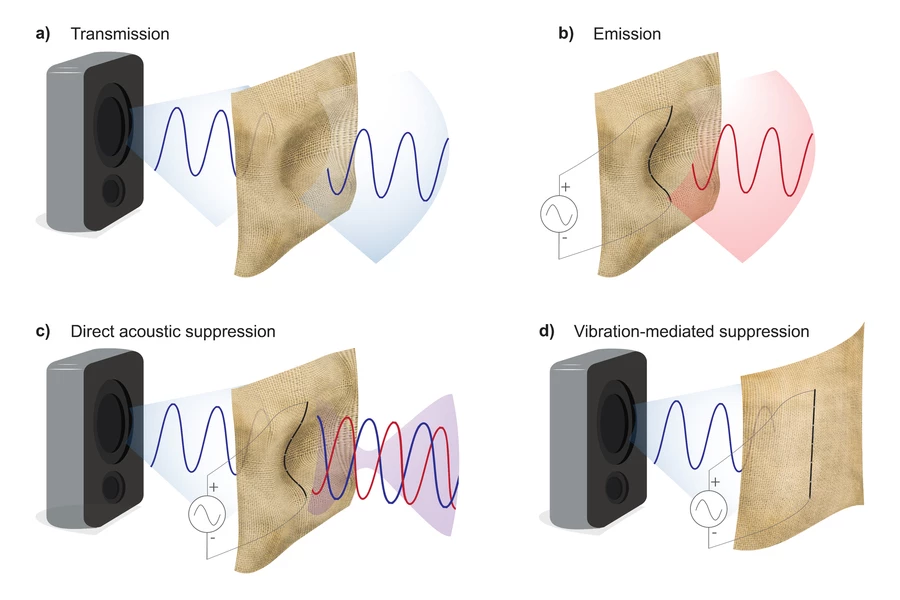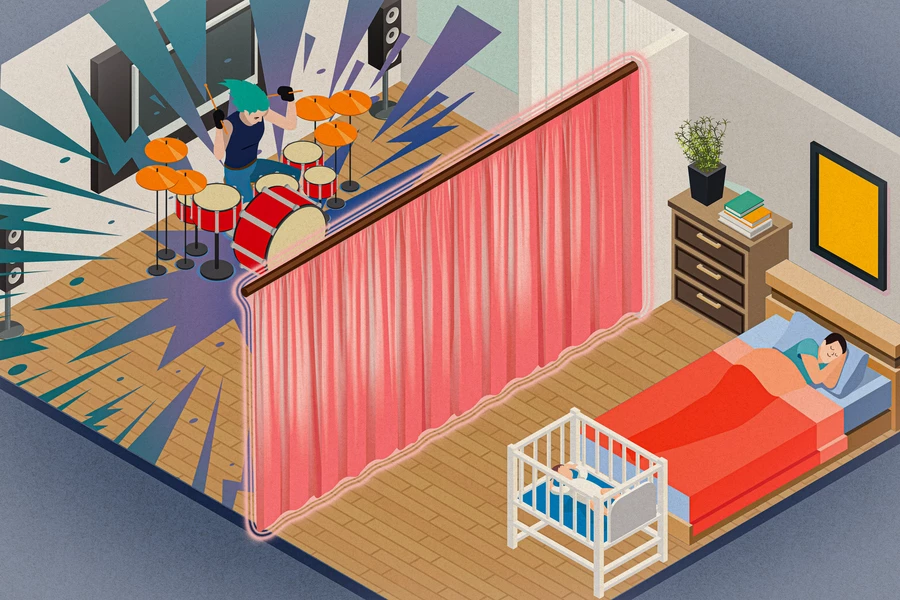There may be new hope for people with noisy neighbors. Scientists at MIT have developed a method of using thin sheets of fabric to either cancel or block sound – in the latter case, the racket even gets reflected back to its maker.
Building upon a previous MIT study in which sheets of fabric were converted into microphones, this latest project turns them into speakers. This is accomplished by taking a thin sheet of fabric (silk works best) and adhering a single piezoelectric fiber to its surface. That fiber runs vertically down the middle of the sheet, which is just 0.13 mm thick.
Piezoelectric materials deform when an electrical current is run through them. When that current rapidly fluctuates, the fiber rapidly moves back and forth between its default and deformed states, producing vibrations that travel through the sheet of material. Those vibrations in turn displace air to produce sound waves, just like a speaker.
If the fabric's sound waves are deliberately made to be out of phase with the offending sound waves, they cancel those other waves out – noise-cancelling headphones work in the same manner. In lab tests, an 8 x 8-cm (3.15 x 3.15-in) silk square was able to emit up to 70 decibels of sound, reducing offending sounds by up to 37 dB.
Having said that, this technique is most effective in fairly small spaces, not in larger settings such as bedrooms. That's where the other technique comes in.

Instead of moving the fabric enough to produce sound waves, the piezoelectric fiber can be used to simply hold the material still, keeping it from vibrating in sync with offending sound waves striking its surface. Therefore, if a sheet of the material were to be hung on a bedroom wall, much of the offending sound that vibrated its way through that wall wouldn't be able to get through the fabric.
When tested in the lab, this technique was found to reduce vibrations in the silk by up to 95%, resulting in a 75% reduction in transmitted sound. The scientists were surprised to discover that the technology also boosted the fabric's ability to reflect sound – back to where it came from – by as much as 68%.
"While we can use fabric to create sound, there is already so much noise in our world. We thought creating silence could be even more valuable," says the lead author of the study, PhD student Grace (Noel) Yang.
A paper on the research – which also involved scientists from Case Western University, the University of Wisconsin at Madison, and the Rhode Island School of Design – was recently published in the journal Advanced Materials.
Source: MIT




